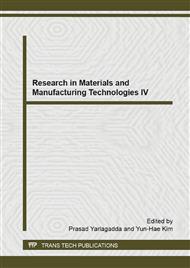[1]
V. Eveloy, S. Ganesan, Y. Fukuda, Ji Wu, M.G. Pecht: IEEE Transactions on Components and Packaging Technologies, Vol. 28, Issue. 4, 2005, pp.884-894.
DOI: 10.1109/tcapt.2005.859353
Google Scholar
[2]
J. Bath, C. Handwerker, E. Bradley: Circuits Assembly, Vol. 11, 2000, pp.45-52.
Google Scholar
[3]
K. Ramachandran, Fuhan Liu, N. Kumbhat, et al.: Reliability of fine pitch halogen-free organic substrates for green electronics, 61st Electronic Components and Technology Conference (ECTC), IEEE, 2011, pp: 2015–(2020).
DOI: 10.1109/ectc.2011.5898793
Google Scholar
[4]
D. Goval, H. Azimi, P. C. Kim, M. -J. Lii: Reliability of high aspect ratio plated through holes (PTH) for advanced printed circuit board (PCB) packages, 35th Annual Proceedings of Reliability Physics Symposium, IEEE, 1997, pp: 129-135.
DOI: 10.1109/relphy.1997.584249
Google Scholar
[5]
Jingsong Xie, Rui Kang, Yuan Zhang, Gordon Guo: A PTH reliability model considering barrel stress distributions and multiple PTHs in a PWB, 44th Annual Reliability Physics Symposium Proceedings, IEEE, 2006, PP: 256-265.
DOI: 10.1109/relphy.2006.251225
Google Scholar
[6]
T. Kinoshita, S. Iwade, S. Shima, et al.: Fatigue strength around through hole in printed circuit board, Microsystems, 8th Packaging, Assembly and Circuits Technology Conference (IMPACT), IEEE, 2013, PP: 238-240.
DOI: 10.1109/impact.2013.6706630
Google Scholar
[7]
IPC-6012C 2010: Qualification and Performance Specification for Rigid Printed Boards.
Google Scholar
[8]
YunHua Tu, Xiaoyan Sun, Song Li, et al.: A study on crystal defects and failure mechanism of copper plating on PTH (In Chinese), http: /www. smte. net.
Google Scholar
[9]
Liang Chen, Zhenquan Liu, Dehuai Wang, Jing Cheng: Printed Circuit Information, 2012, Vol. S1 pp.274-280(In Chinese).
Google Scholar
[10]
IPC-4101C 2009: Specification for Base Materials for Rigid and Multilayer Printed Boards.
Google Scholar


